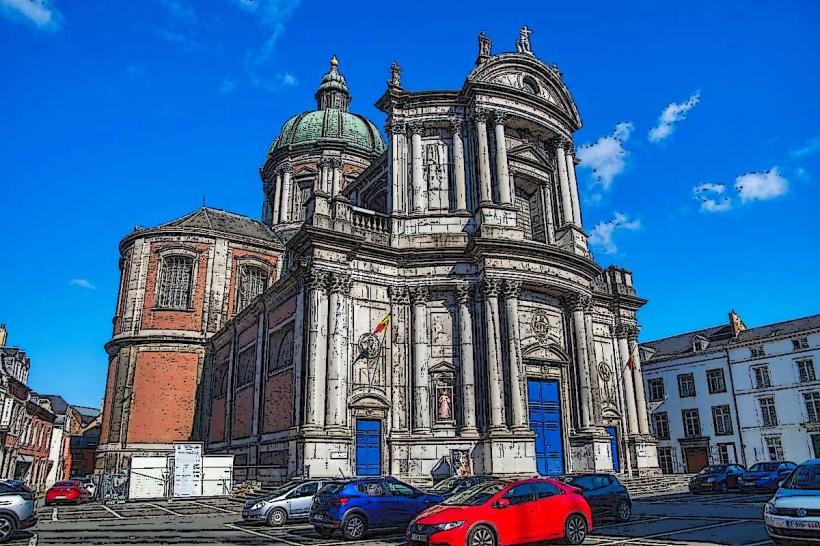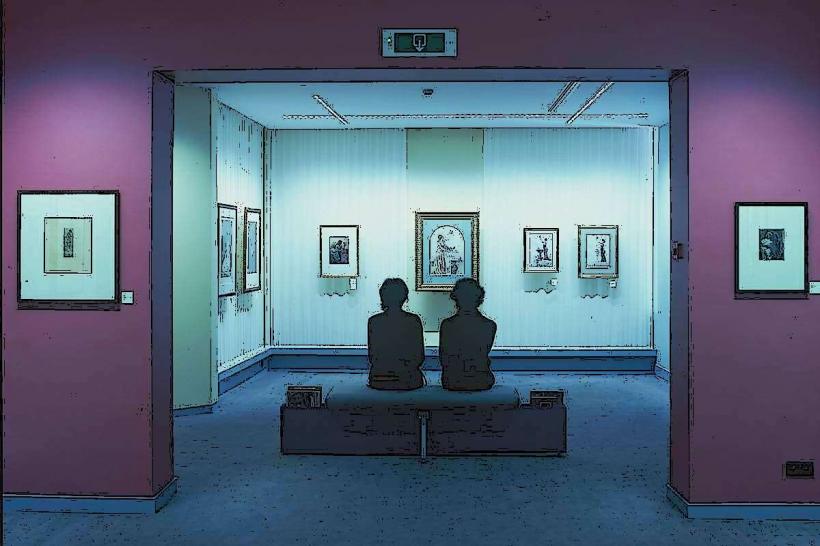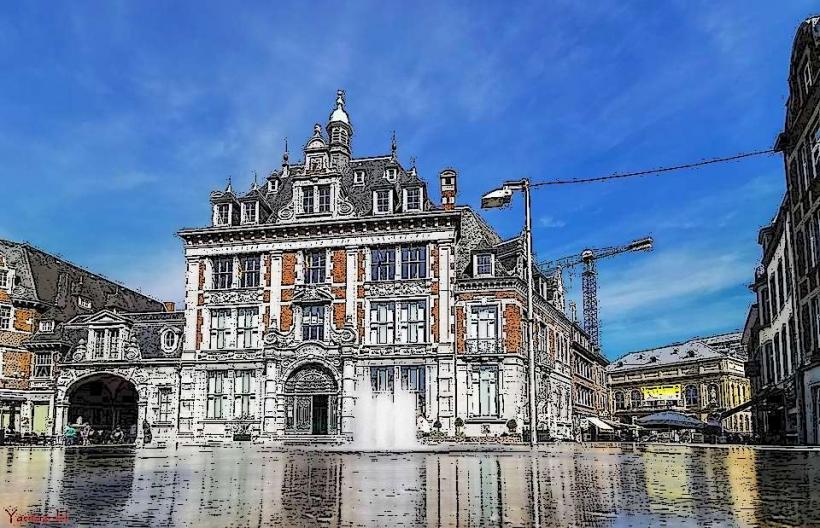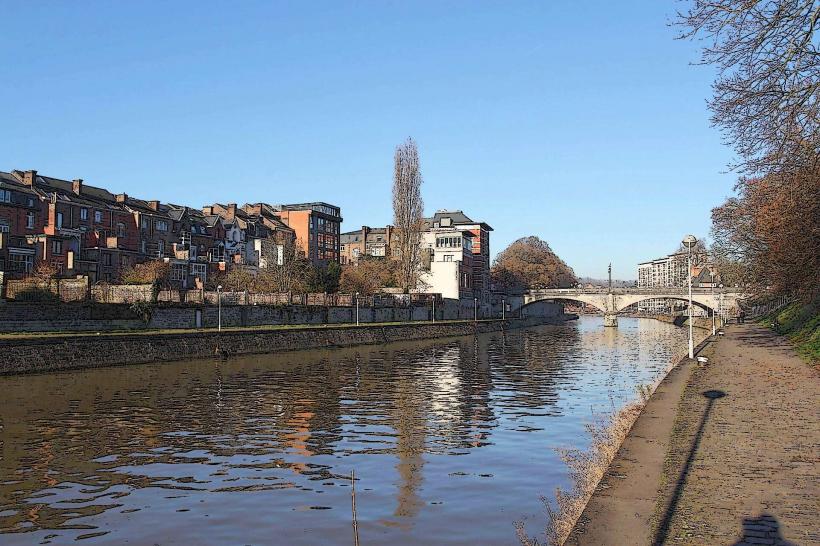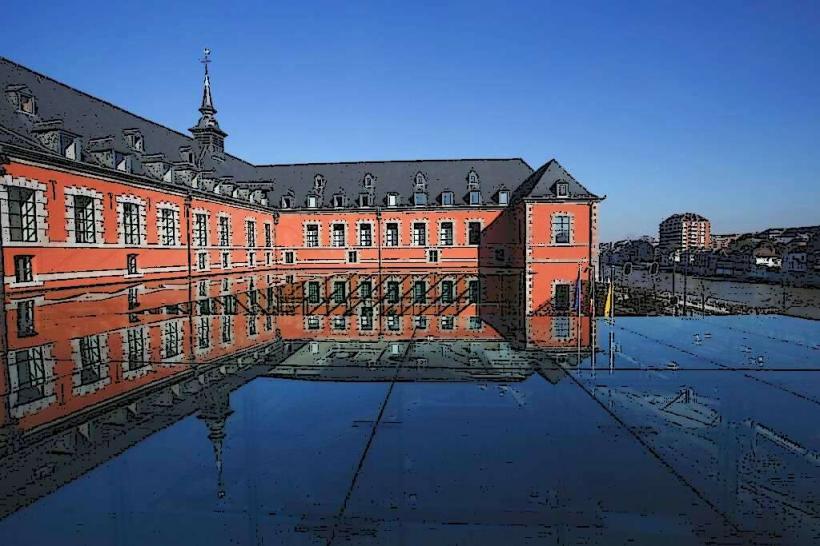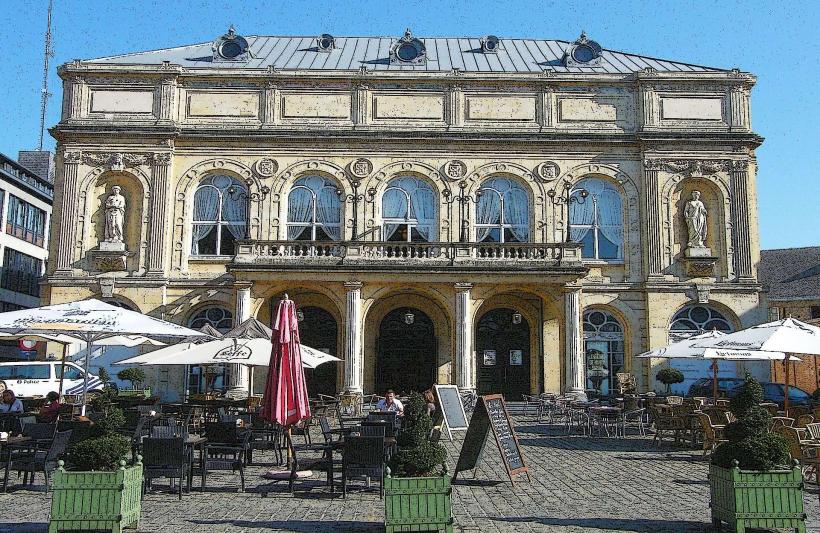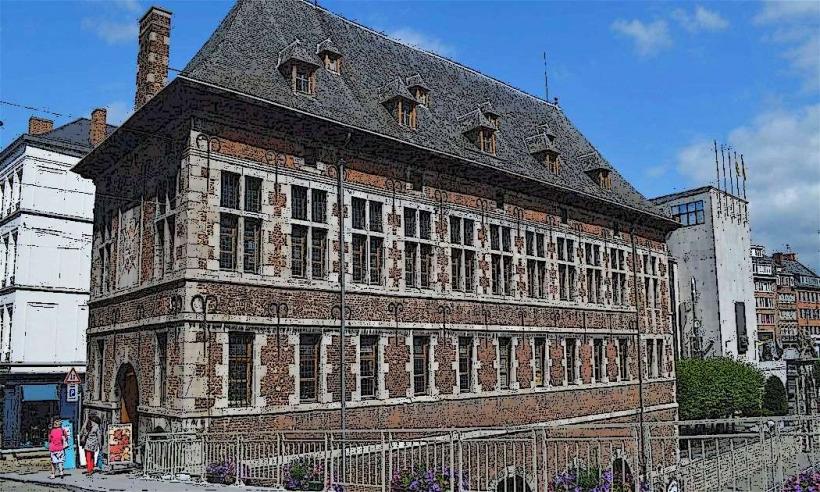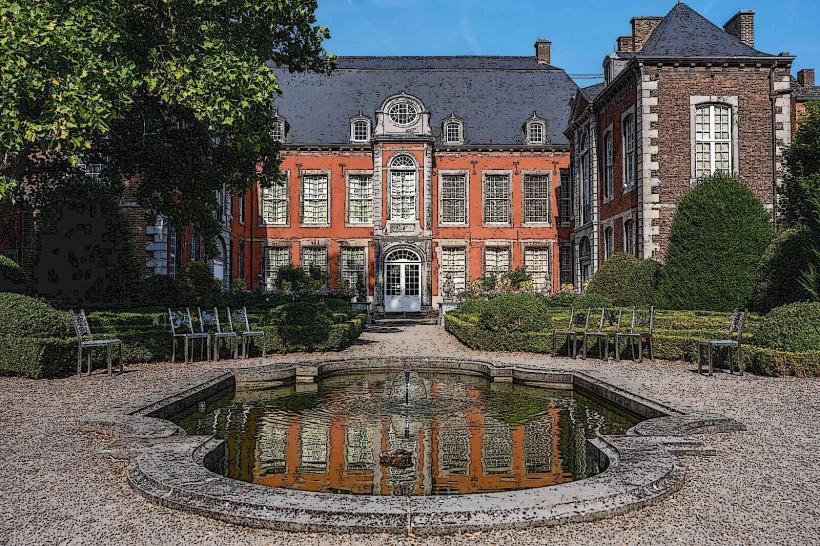Information
Landmark: Citadel of NamurCity: Namur
Country: Belgium
Continent: Europe
The Citadel of Namur (Citadelle de Namur) is one of the most impressive and historically significant fortresses in Belgium, located at the confluence of the Meuse and Sambre rivers in the city of Namur, the capital of the Walloon Region. This massive fortification complex has played a crucial role in the defense of the region throughout history, and today it is a popular tourist destination offering sweeping views, historical exhibits, and beautiful green spaces.
Historical Background
Early Origins: The site of the Citadel has been strategically important for centuries. The first fortifications on the hilltop were built by the Romans to defend the area from invaders, though the structure itself evolved significantly over time. The current Citadel was developed and expanded during the medieval period and later through various phases of military architecture, particularly during the Renaissance and early modern eras.
Medieval Beginnings: The earliest known fortifications of the Citadel were established in the 11th century, though the structure remained relatively simple compared to later developments. Over time, the fortifications grew in size and complexity, particularly as Namur became an important strategic point in the region.
16th and 17th Century Fortifications: During the Spanish Habsburg period in the 16th century, the Citadel was significantly reinforced. The Dutch and French sieged it multiple times, and its fortifications were continuously upgraded. The Citadel’s strategic location allowed control of both river valleys and was key in protecting against foreign invaders.
French and Austrian Control: Over the centuries, the Citadel changed hands multiple times. During the French Revolutionary Wars in the late 18th century, it was held by the French for a time, and later, under the Austrians, it underwent further military enhancements. The fortifications were again modernized during the 19th century, particularly under the Belgian government when the Citadel was a central element in defending the new Belgian state.
World War I and World War II: The Citadel’s military importance continued into the 20th century, though it was primarily used for defensive purposes during the two World Wars. It was occupied by German forces during World War I and German and later American forces during World War II.
Architectural Features
Defensive Architecture: The Citadel of Namur is a prime example of Vauban-style fortifications, named after the famous French military engineer Sebastien Le Prestre de Vauban. The Citadel features:
- Thick stone walls designed to withstand artillery fire.
- Star-shaped bastions that offer better defense and fire coverage.
- Moats and drawbridges that provided additional protection for the citadel during sieges.
- Ramps and tunnels that were used for troop movements and access to various sections of the fortress without exposure to enemy fire.
Underground Tunnels: One of the most distinctive features of the Citadel is its extensive network of underground tunnels. These tunnels allowed for movement within the citadel while protecting soldiers and officers from enemy fire. Today, parts of these tunnels are open to the public, offering a fascinating glimpse into the defensive strategy of the time.
Bastions and Watchtowers: The Citadel includes several bastions and watchtowers that would have allowed defenders to keep watch over the surrounding area. The Bastion de la Ville and Bastion de la Meuse are two key points from which the fortress would have been able to defend against attacks from the city side and the river, respectively.
The Citadel’s Gatehouse: The entrance to the Citadel is through a fortified gatehouse, which features a drawbridge and a large arched entrance. This was the main point of entry for soldiers and supplies.
Role in Belgian History
Military Significance: As mentioned, the Citadel played a crucial role in Belgium’s military history, acting as a stronghold against various invaders, including the Spanish, French, and Dutch forces. During the Belgian Revolution of 1830, the Citadel was a key location in the conflict between Belgian revolutionaries and the Dutch army.
Symbol of Power: For much of its history, the Citadel symbolized both military power and the political influence of the forces that controlled Namur and the surrounding region. It was integral in the defense of the area and was often used as a military garrison.
Modern-Day Significance
Tourism and Public Access: Today, the Citadel of Namur is a major tourist attraction, drawing visitors interested in military history, architecture, and panoramic views. It offers some of the best views of the city of Namur, the Meuse river, and the surrounding countryside. Visitors can take walking tours, explore the underground tunnels, and visit the museum exhibits that focus on the Citadel’s history and the military history of Namur.
Cultural and Recreational Space: The Citadel also hosts a variety of cultural events and festivals, including concerts, open-air performances, and historical reenactments. The large green spaces surrounding the Citadel are perfect for picnics, walking, and enjoying the natural beauty of the area.
Educational and Museum Space: The Citadel houses several museums and educational displays. The Citadel Museum is dedicated to the history of the fortress and its military significance, showcasing artifacts, models, and exhibits on the military history of the region. The Museum of the Art of War offers insights into the evolution of military technology and strategy over the centuries.
Visitor Experience
Walking Tours: Visitors can explore the Citadel’s ramparts, tunnels, and bastions on foot. The panoramic views from the top of the Citadel are especially breathtaking, offering a great vantage point over Namur and the Meuse River.
Underground Tours: The tunnels beneath the Citadel, some of which date back to the 17th century, can be explored with guides who explain their historical significance and role in the fortress’s defense.
Museums and Exhibits: The Citadel is home to several museums, including exhibitions about the fortress's construction, the history of Namur, and the military significance of the region. Interactive displays make it an engaging visit for all ages.
Events and Activities: The Citadel hosts a range of events throughout the year, such as open-air concerts, medieval festivals, and historical reenactments, making it a vibrant cultural venue as well.
Conclusion
The Citadel of Namur is not only a remarkable example of military architecture but also an enduring symbol of the city’s strategic importance throughout history. From its medieval origins to its role in the 20th century wars, it has been at the heart of the region’s defense. Today, it offers visitors a chance to explore Belgium’s military past while enjoying stunning views and rich cultural experiences. Whether you're interested in history, architecture, or simply want to enjoy the beauty of Namur from above, the Citadel is a must-see landmark.

